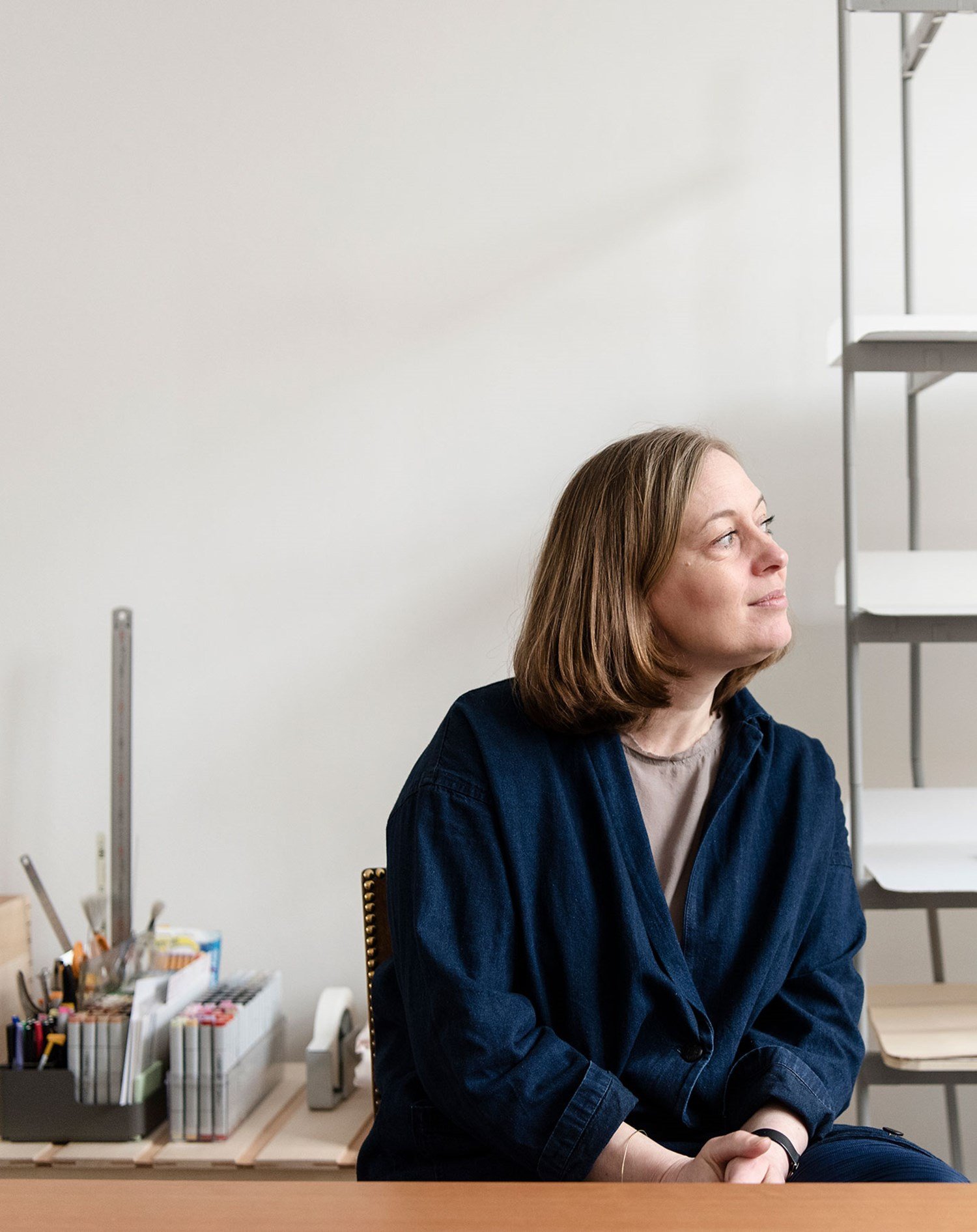Contract market and A&D professionals?
Go to our dedicated space for contract professionals, designed to streamline projects with accurate pricing, assets, and resources.
Select country
our guess is, you're located in

workshop chair — a design process on display


Dubbed The Needle in the Haystack, the exhibition acts as an in-depth experience of Manz’ design process; from sketches over models and prototyping to the final object, spanning the entire breadth of industrial design across furniture, lighting, accessories, cutlery and even a bathtub. At the heart of the exhibition lies Manz’ Workshop Chair, designed for Muuto.
“I’ve always believed that you shouldn’t be afraid of doing something that’s quiet; something that isn’t about making noise in one way or the other. That’s where the initial idea for the Workshop Chair came from,” says Manz and adds: “The original design was made in Oregon Pine. It’s one of my favorite materials to work with. It is at once soft, light and warm and follows the ideas of silent expressionism in the Workshop Chair.”
Upon entering the exhibition at the Danish Architecture Center, one meets the first podium upon which the design process of the Workshop Chair is brought to life while a number of the chairs in black are lined up against each wall.
On the role of Workshop Chair in the exhibition, Manz notes: “I chose the Workshop Chair as one of two highlighted projects as I found it to be a concise example of a short and intense sprint from initial idea to the complete design. I tend to sketch around a lot, but the Workshop Chair was conceived solely through modelmaking in our workshop. It started with a rough iteration from where we made it more and more detailed throughout.”


When walking around the exhibition space to a neatly curated soundscape that flows throughout, one almost gets the feeling of being in the workspace of Manz herself. On this, she remarks: “I wanted to show all that goes on in my Sølvgade studio; the projects that have been underway for years and the great amount of effort that lies behind each; to show that designing objects aren’t merely to jot down sketches on a piece of paper, hand them to a manufacturer and say ‘See you in Milan next year’ — there’s so much work back and forth internally and with the manufacturer that goes on throughout several years,” she says.
When asked for an example of design processes that are more encompassing than one might think, Manz explains: “It can take three years to develop a simple, great spoon; how does it feel when in use? Is its aesthetics in balance? What’s the distribution of weight like? Can we carve it out a bit more to make it softer? What happens if we deduct a quarter of a millimeter here? This was something that I wanted to expand on; the laborious process that makes up the large majority of my work and time.”
Ending on her thoughts on what emotion or impression that she wanted to evoke through the exhibition, Manz closes: “That I am personally accountable for every single product that I bring into the world; that you can place your trust and faith in every singular detail and that the final product is exactly as it should be.”
The Needle in the Haystack by Cecilie Manz can be experienced at Danish Architecture Center until January 9th, 2022. Click here to explore more about the exhibition.









